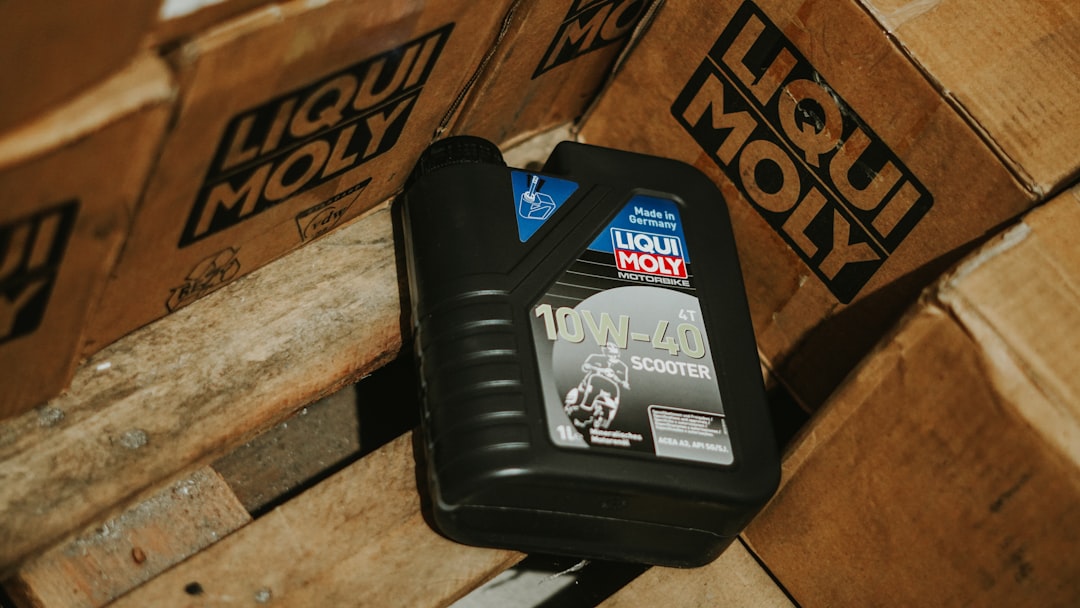In the realm of food safety and public health, the differences between regulations in the United States and the European Union often spark significant debate. One of the most striking contrasts lies in the approach to food additives. While the U.
Food and Drug Administration (FDA) permits a wide array of substances to enhance flavor, texture, and shelf life, the European Union (EU) has taken a more cautious stance, banning several additives that are commonly used in American food products. This divergence raises important questions about consumer safety, health risks, and the implications for international trade. The EU’s stringent regulations reflect a precautionary principle that prioritizes public health over economic interests. As consumers become increasingly aware of what they are putting into their bodies, the differences in food additive regulations between these two regions have garnered attention. This article aims to explore the landscape of food additives banned in the EU, examining their potential health risks, alternatives, and the broader implications for U.S.
Key Takeaways
- The EU has stricter regulations on food additives compared to the US, leading to a number of additives being banned in the EU but allowed in the US.
- The EU’s regulation on food additives focuses on ensuring the safety of consumers and the protection of public health.
- Some of the US food additives banned in the EU include certain artificial colors, preservatives, and flavor enhancers.
- Banned food additives may pose potential health risks such as allergies, hyperactivity, and carcinogenic effects.
- Alternatives to banned food additives include natural ingredients, organic products, and non-chemical preservatives.
Overview of the EU’s Regulation on Food Additives
The European Union has established a comprehensive framework for regulating food additives, grounded in principles that emphasize consumer safety and transparency. The European Food Safety Authority (EFSA) plays a pivotal role in assessing the safety of food additives before they can be approved for use. This rigorous evaluation process involves extensive scientific research and risk assessment, ensuring that any additive deemed safe for consumption meets strict health standards.
In contrast to the U.S. system, where many additives are allowed unless proven harmful, the EU adopts a more proactive approach. Additives must undergo thorough scrutiny, and only those that pass this evaluation are permitted in food products.
This regulatory environment reflects a commitment to protecting public health, as well as a desire to foster consumer trust in the food supply. The EU’s regulations also require clear labeling of food additives, allowing consumers to make informed choices about what they consume.
List of US Food Additives Banned in the EU

Several food additives commonly found in U.S. products have been banned in the EU due to concerns over their safety and potential health effects. Among these are artificial colorings such as Yellow 5 (Tartrazine) and Red 40 (Allura Red), which have been linked to hyperactivity in children and other behavioral issues.
Additionally, certain preservatives like BHA (Butylated Hydroxyanisole) and BHT (Butylated Hydroxytoluene) are prohibited in Europe due to their potential carcinogenic properties. Another notable example is potassium bromate, a flour improver that has been linked to kidney damage and is banned in many countries outside the U.S. Similarly, azodicarbonamide, a dough conditioner often used in bread products, has raised concerns over its potential to form harmful byproducts during baking.
The list of banned additives continues to grow as new research emerges, highlighting the ongoing evolution of food safety standards in the EU.
Potential Health Risks Associated with Banned Food Additives
| Food Additive | Potential Health Risks |
|---|---|
| Artificial colors (Blue 1, Blue 2, Yellow 5, Yellow 6, Red 40) | Linked to hyperactivity in children, allergic reactions, and potential carcinogenic effects |
| Trans fats | Increases risk of heart disease, stroke, and type 2 diabetes |
| Sodium nitrite | Linked to an increased risk of cancer, particularly colorectal cancer |
| Butylated hydroxyanisole (BHA) and butylated hydroxytoluene (BHT) | Potential carcinogenic effects and may disrupt hormone balance |
The health risks associated with food additives banned in the EU are a significant concern for consumers and health advocates alike. Many of these substances have been linked to various adverse health effects, prompting regulatory bodies to take action. For instance, studies have suggested that artificial colorings may exacerbate attention deficit hyperactivity disorder (ADHD) symptoms in children, leading to calls for stricter regulations on their use.
Preservatives like BHA and BHT have also come under scrutiny due to their potential carcinogenic effects. Research has indicated that these additives may disrupt hormonal balance and contribute to the development of certain cancers. The cumulative impact of consuming these additives over time raises further questions about long-term health implications, particularly for vulnerable populations such as children and pregnant women.
Alternatives to Banned Food Additives
In light of the concerns surrounding banned food additives, many manufacturers are exploring alternative ingredients that can achieve similar effects without compromising safety. Natural colorings derived from fruits, vegetables, and spices are gaining popularity as substitutes for synthetic dyes. For example, beet juice can provide a vibrant red hue, while turmeric offers a natural yellow coloring.
Preservatives are also evolving, with many companies opting for natural options such as vinegar, rosemary extract, or citric acid to extend shelf life without resorting to controversial chemicals. These alternatives not only align with consumer demand for cleaner labels but also reflect a growing trend toward sustainability and health-conscious eating. As awareness of food safety issues continues to rise, the market for natural additives is likely to expand further.
Impact on US Food Exporters

The differences in food additive regulations between the U.S. and EU have significant implications for American food exporters. Companies seeking to enter the European market must navigate a complex landscape of regulations that may require reformulating their products to comply with EU standards.
This process can be both time-consuming and costly, posing challenges for smaller businesses that may lack the resources to adapt. Moreover, failure to comply with EU regulations can result in products being banned from entry into European markets, leading to substantial financial losses for exporters. As consumer preferences shift toward safer and more natural products, U.S.
companies may find it increasingly necessary to align their practices with those of the EU to remain competitive on the global stage.
How to Identify Banned Food Additives in US Products
For consumers concerned about the presence of banned food additives in U.S. products, vigilance is key. Reading ingredient labels is an essential practice for anyone looking to make informed dietary choices.
Many food manufacturers are now required to list all ingredients on packaging, including additives and preservatives. Consumers can also utilize online resources and databases that provide information on food additives and their safety profiles. Organizations such as the Center for Science in the Public Interest (CSPI) offer valuable insights into which additives are considered safe or potentially harmful.
By staying informed and proactive, consumers can better navigate the complexities of food labeling and make choices that align with their health priorities.
Consumer Awareness and Education
Raising consumer awareness about food additives is crucial for fostering informed decision-making. Educational campaigns can empower individuals to understand the implications of consuming certain additives and encourage them to seek out safer alternatives. Schools, community organizations, and health professionals can play a vital role in disseminating information about food safety and nutrition.
Social media platforms also serve as powerful tools for spreading awareness about food additives and their potential risks. Influencers and health advocates can share insights on safer eating practices, helping to create a more informed public discourse around food safety issues. As consumers become more educated about what they eat, they can advocate for better regulations and demand higher standards from food manufacturers.
The Role of Regulatory Agencies in Ensuring Food Safety
Regulatory agencies play a critical role in ensuring food safety by establishing guidelines and standards for food additives. In the U.S., the FDA is responsible for evaluating the safety of food substances before they can be marketed. However, critics argue that this system often allows potentially harmful additives to remain on the market until sufficient evidence emerges regarding their risks.
In contrast, European regulatory bodies like EFSA prioritize precautionary measures by banning substances that pose even a potential risk until proven safe. This difference highlights the varying philosophies underpinning food safety regulations in each region. As global trade continues to expand, collaboration between regulatory agencies may be necessary to harmonize standards and ensure consumer protection across borders.
Comparison of Food Additive Regulations in the US and EU
The comparison between U.S. and EU regulations on food additives reveals fundamental differences in approach and philosophy. The U.S. system operates on a “generally recognized as safe” (GRAS) principle, allowing many additives to be used unless proven harmful through extensive testing. This reactive approach contrasts sharply with the EU’s proactive stance, where substances must demonstrate safety before being approved for use. These regulatory differences not only impact consumer safety but also influence international trade dynamics. U.S. exporters often face challenges when attempting to enter European markets due to stringent regulations that require reformulation or removal of certain additives from their products. As global awareness of food safety issues continues to grow, these disparities may prompt calls for greater alignment between U.S. and EU standards.
Conclusion and Recommendations for Consumers
In conclusion, understanding the landscape of food additives banned in the EU provides valuable insights into broader issues of food safety and public health. As consumers become more aware of what they eat, they can make informed choices that prioritize their well-being. It is essential for individuals to educate themselves about food labeling practices and stay informed about which additives may pose risks.
Consumers are encouraged to seek out products with natural ingredients and minimal processing whenever possible. By supporting companies that prioritize transparency and safety, individuals can contribute to a healthier food environment while advocating for better regulations within the industry. Ultimately, fostering awareness and education around food additives will empower consumers to make choices that align with their values and health goals while promoting a safer food supply for all.
In recent years, there has been growing concern over the safety of certain food additives used in the United States, many of which are banned in the European Union due to health risks. An insightful article on this topic can be found on HeyDidYouKnowThis, which delves into the differences in food safety regulations between the US and the EU. The article highlights specific additives that are permitted in the US but prohibited in the EU, shedding light on the potential health implications of these substances. For more detailed information, you can read the full article by visiting this link.
WATCH THIS! 👀Why These 30 American Products Are Immediately Illegal In Europe
FAQs
What are food additives?
Food additives are substances added to food to preserve flavor or enhance its taste, appearance, or other qualities. They can be natural or synthetic and are regulated by food safety authorities.
What are some examples of food additives?
Common food additives include preservatives, artificial sweeteners, colorings, flavorings, and emulsifiers. These substances are used in a wide variety of processed and packaged foods.
Why are some US food additives banned in the EU?
The European Union has stricter regulations on food additives compared to the United States. Some additives that are permitted in the US may be banned in the EU due to concerns about their safety or potential health risks.
What are some US food additives that are banned in the EU?
Examples of US food additives that are banned in the EU include certain artificial colorings, preservatives, and flavor enhancers. These additives may have been linked to health issues or have been deemed unnecessary for food production in the EU.
How do food additive regulations differ between the US and the EU?
The US and the EU have different approaches to regulating food additives. The US generally allows a wider range of additives to be used in food products, while the EU has a more precautionary approach, requiring extensive safety assessments before approving additives for use.
Are there potential health concerns associated with banned food additives?
Some banned food additives have been linked to health concerns such as allergies, hyperactivity in children, and potential carcinogenic effects. The EU’s decision to ban certain additives reflects its commitment to protecting public health and safety.
